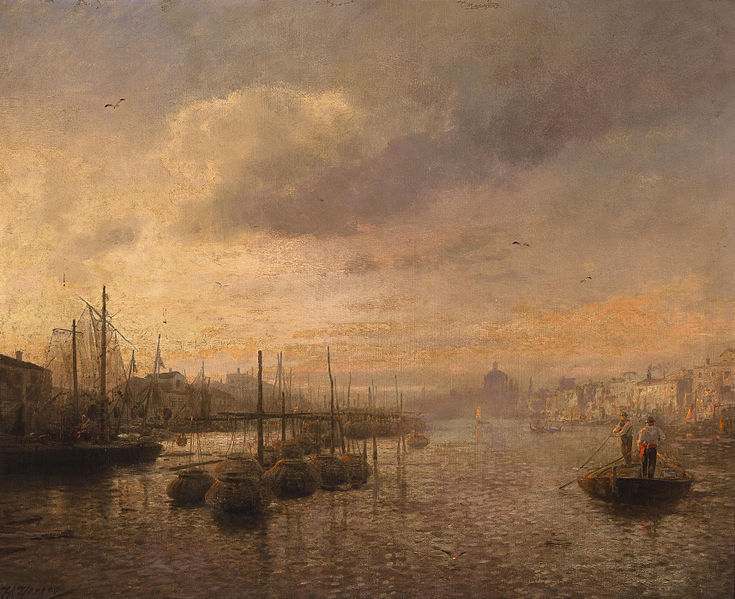By James Grant
Plato famously said that there is an ancient quarrel between philosophy and poetry. But with respect to one aspect of poetry, namely metaphor, many contemporary philosophers have made peace with the poets. In their view, we need metaphor. Without it, many truths would be inexpressible and unknowable. For example, we cannot describe feelings and sensations adequately without it. Take Gerard Manley Hopkins’s exceptionally powerful metaphor of despair:
selfwrung, selfstrung, sheathe- and shelterless,
thoughts against thoughts in groans grind.
How else could precisely this kind of mood be expressed? Describing how things appear to our senses is also thought to require metaphor, as when we speak of the silken sound of a harp, the warm colours of a Titian, and the bold or jolly flavour of a wine. Science advances by the use of metaphors – of the mind as a computer, of electricity as a current, or of the atom as a solar system. And metaphysical and religious truths are often thought to be inexpressible in literal language. Plato condemned poets for claiming to provide knowledge they did not have. But if these philosophers are right, there is at least one poetic use of language that is needed for the communication of many truths.
In my view, however, this is the wrong way to defend the value of metaphor. Comparisons may well be indispensable for communication in many situations. We convey the unfamiliar by likening it to the familiar. But many hold that it is specifically metaphor – and no other kind of comparison – that is indispensable. Metaphor tells us things the words ‘like’ or ‘as’ never could. If true, this would be fascinating. It would reveal the limits of what is expressible in literal language. But no one has come close to giving a good argument for it. And in any case, metaphor does not have to be an indispensable means to knowledge in order to be as valuable as we take it to be.
Metaphor may not tell us anything that couldn’t be expressed by other means. But good metaphors have many other effects on readers than making them grasp some bit of information, and these are often precisely the effects the metaphor-user wants to have. There is far more to the effective use of language than transmitting information. My particular interest is in how art critics use metaphor to help us appreciate paintings, architecture, music, and other artworks. There are many reasons why metaphor matters, but art criticism reveals two reasons of particular importance.

Take this passage from John Ruskin’s The Stones of Venice. Ruskin describes arriving in Venice by boat and seeing ‘the long ranges of columned palaces,—each with its black boat moored at the portal,—each with its image cast down, beneath its feet, upon that green pavement which every breeze broke into new fantasies of rich tessellation’, and observing how ‘the front of the Ducal palace, flushed with its sanguine veins, looks to the snowy dome of Our Lady of Salvation’.
One thing Ruskin’s metaphors do is describe the waters of Venice and the Ducal palace at an extraordinary level of specificity. There are many ways water looks when breezes blow across its surface. There are fewer ways it looks when breezes blow across its surface and make it look like something broken into many pieces. And there are still fewer ways it looks when breezes blow across its surface and make it look like something broken into pieces forming a rich mosaic with the colours of Venetian palaces and a greenish tint. Ruskin’s metaphor communicates that the waters of Venice look like that. The metaphor of the Ducal palace as ‘flushed with its sanguine veins’ likewise narrows the possible appearances considerably. Characterizing appearances very specifically is of particular use to art critics, as they often want to articulate the specific appearance an artwork presents.
A second thing metaphors like Ruskin’s do is cause readers to imagine seeing what he describes. We naturally tend to picture the palace or the water on hearing Ruskin’s metaphor. This function of metaphor has often been noted: George Orwell, for instance, writes that ‘a newly invented metaphor assists thought by evoking a visual image’.
Why do novel metaphors evoke images? Precisely because they are novel uses of words. To understand them, we cannot rely on our knowledge of the literal meanings of the words alone. We often have to employ imagination. To understand Ruskin’s metaphor, we try to imagine seeing water that looks like a broken mosaic. If we manage this, we know the kind of look that he is attributing to the water.
Imagining a thing is often needed to appreciate that thing. Knowing facts about it is often not enough by itself. Accurately imagining Hopkins’s despondency, or the experience of arriving in Venice by boat, gives us some appreciation of these experiences. By enabling us to imagine accurately and specifically, metaphor is exceptionally well suited to enhancing our appreciation of what it describes.
James Grant is a Tutorial Fellow in Philosophy at Exeter College, Oxford. He is the author of The Critical Imagination.
Subscribe to only philosophy articles on the OUPblog via email or RSS.
The post Why metaphor matters appeared first on OUPblog.


